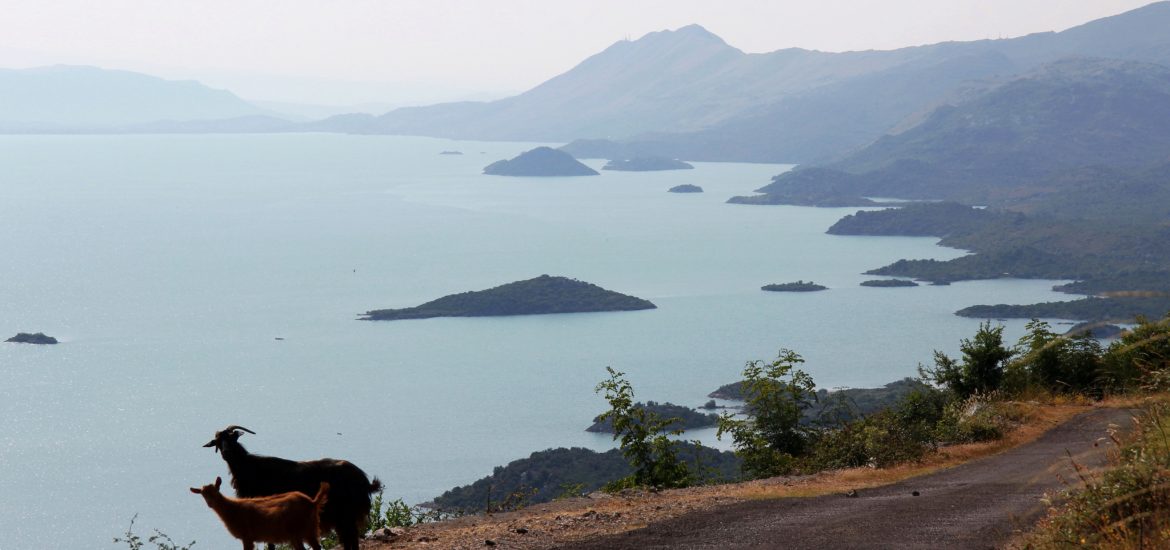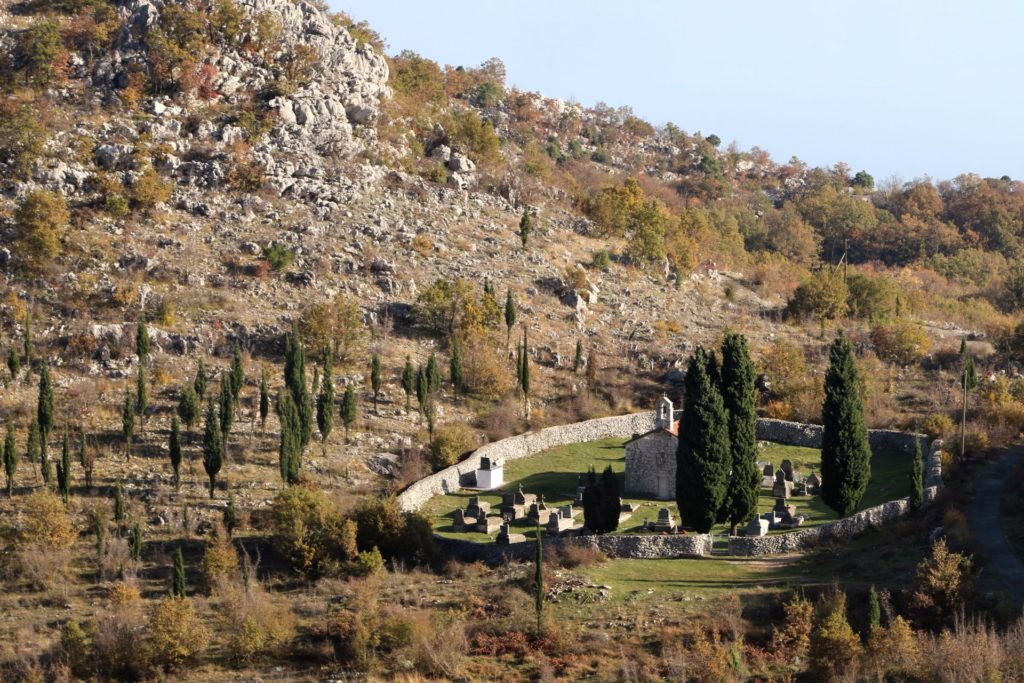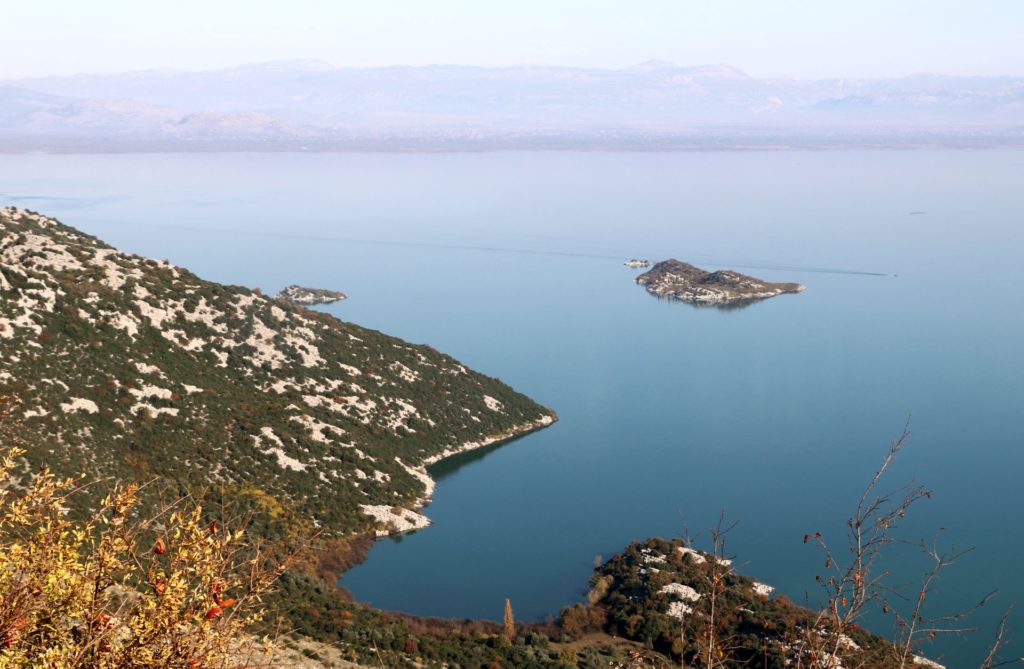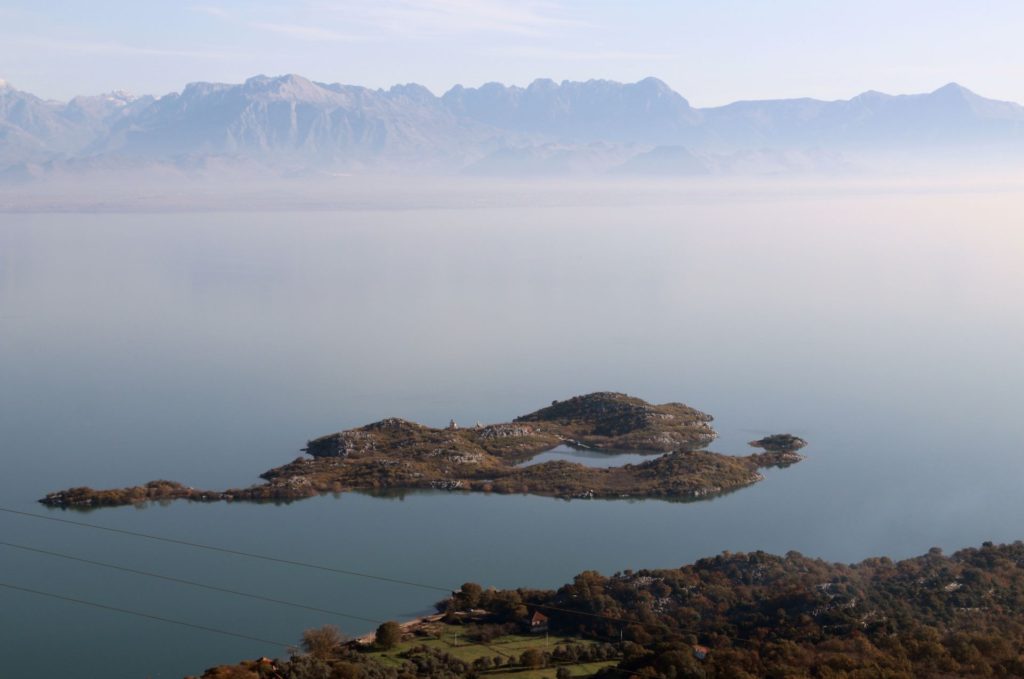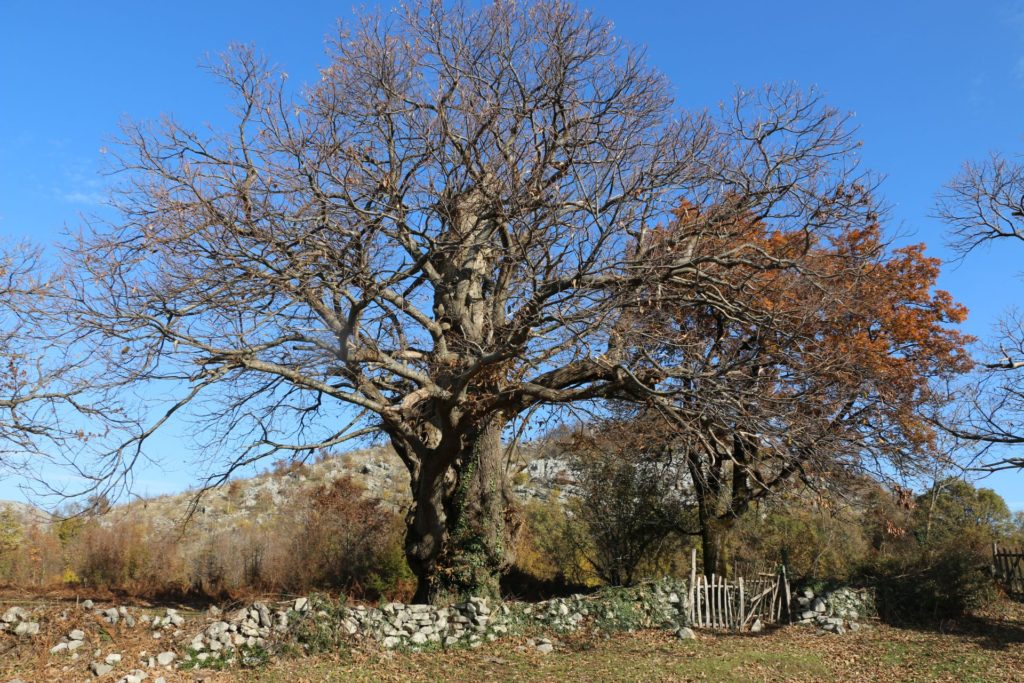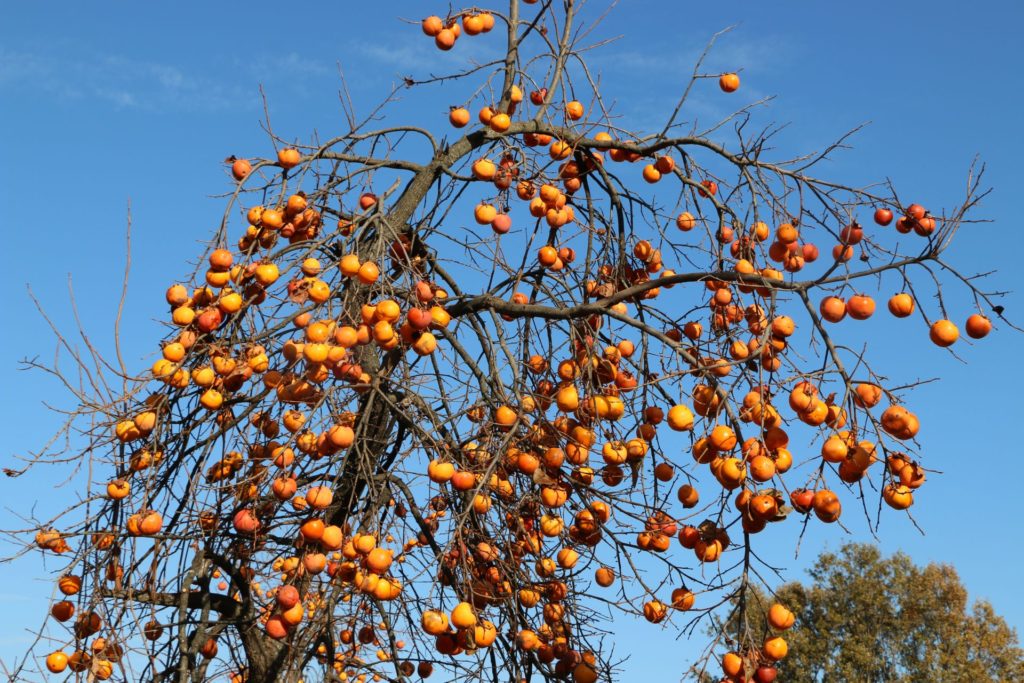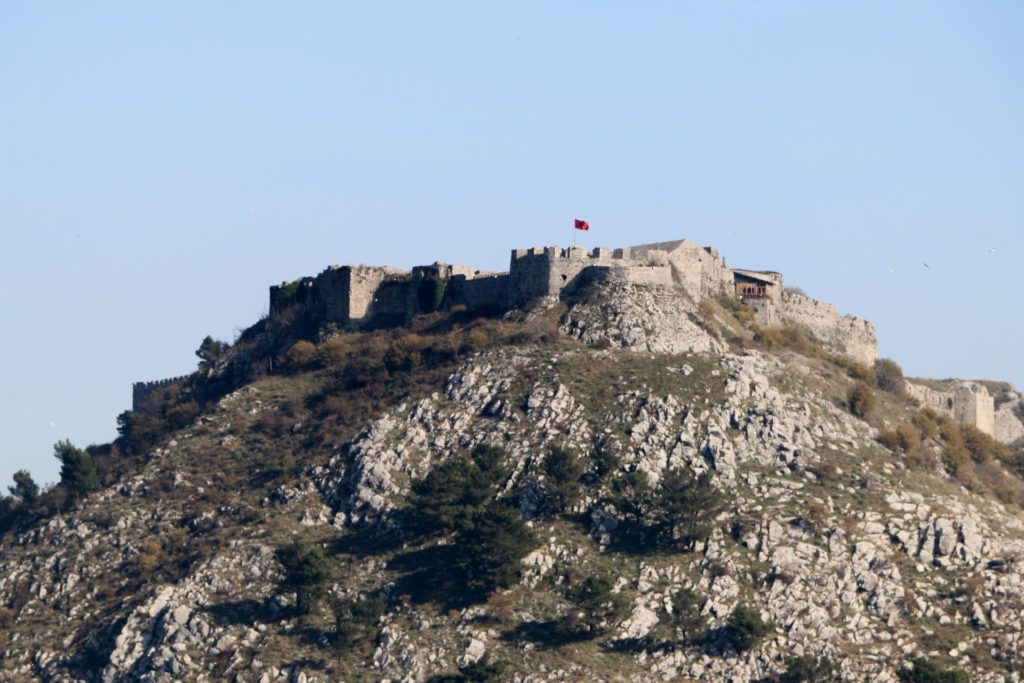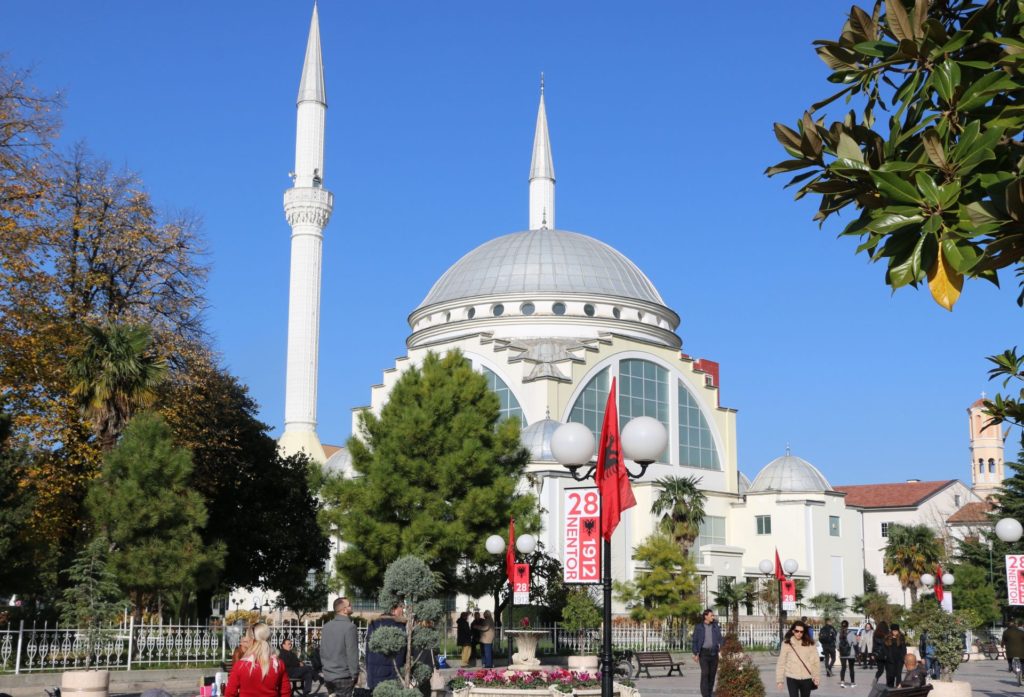Do you have an adventurous spirit? Can you cope with narrow, winding and steep roads, without protection rails? And are you sure that you don’t have fear of heights? If yes, it will be a fascinating experience to make a day trip around Skadar Lake. Starting from Podgorica, this tour is 157 km long, but… it will take you at least 4 hours to pass the whole distance!
From Virpazar, the road leads further along the western coast of Skadar Lake to Murići (see Exploring the western shore of Skadar Lake), turns inland to Ostros, and then descends to Sukobin/Muriqan, where you pass the Montenegrin/Albanian border and continue to Shkodra. There is no public transport available, so you will need your own car (or rent one). But you will be awarded with an unbelievable diversity of sceneries: breathtaking views of the lake against the backdrop of the snow-covered Albanian Alps, solitary islands, picturesque churches, monasteries and mosques, authentic little villages and finally the city of Shkodra (in Montenegrin: Skadar) with its vibrant atmosphere and interesting sights.
We made the trip on a sunny day in November and started early in the morning. Passing through the charming village of Virpazar (keep left after you pass the bridge), we entered the region of Krajina, a natural entity situated between Skadar Lake and Mount Rumija and stretching between Virpazar in the north and the Albanian border in the south.
Climbing steadily along the shore, we saw, far away on the lake, the tiny islet of Grmožur, once used as a prison, now populated by cormorants and seagulls only.
Soon we passed the historic settlement of Godinje, a cluster of old stone houses, built close to each other with thick walls and arched entrances (see Skadar Lake: between Godinje and Raduš). Red wine from this area is famous!
The road became narrower and steeper, offering us magnificent views of the Lake, its little islets and the Albanian Alps on the opposite site.
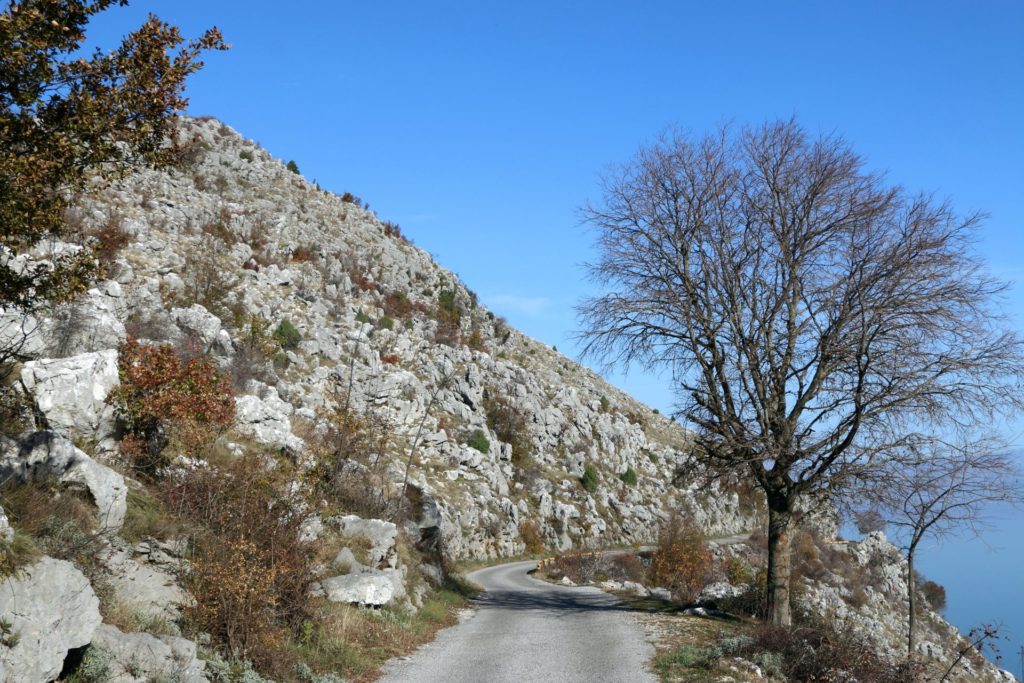
Continuing our tour, we discovered several villages on the shore, inhabited by Muslim or catholic ethnic Albanians. In the village of Šestan we found a old bell tower and a simple catholic church, built instead of the old ruined one (follow the signpost to Karanikići, downhill on the left side of the road: it is a wonderful place!)
The Starčevo monastery, founded in 1377, is located on the island of Starčeva Gorica, lying just off the shore opposite to the village of Djuravci. From the road we also had a great view of a small church in the shade of tall cypresses, surrounded by an old stone wall.
Further southwards, the scenery became wild and desolate. Just rocks and shrubbery, with here and there a lonely tree along the road. But deep down on our left side, we soon discovered the village of Donji Murići among vast olive groves. This village has a pebble beach with a tourist settlement and a Visitor Center (now closed – season from May to September), where you can also hire a boat to visit the island of Beška with its beautiful 14th century monastery.
The road turned inland, the scenery changed and made place for more fertile grounds and greener surroundings. Chestnut forests, oak trees and old graveyards seemed to be characteristic for this area, where people still practice agriculture in the traditional way. The climate is also suitable for tobacco growing. Here and there, the gardens were decorated with orange persimmon (kaki) trees, which lose their leaves before the fruit is ripe.
The village of Kostanjica has got its name after two vast chestnut (“kesten”) forests. We were impressed by the mystic atmosphere of this area, with centuries-old trees overhanging the road. The huge trees totally dimmed the sunlight, although the day was sunny and bright.
Continuing our trip through the village of Ostros, we reached the Stegvoš pass and then descended to Vladimir, where we joined the main road to the Montenegrin/Albanian border.
Through a fertile and rich agricultural area, we finally reached Shkodra, passing the new bridge over the Buna or Bojana. From far away we already discovered the Rozafa castle on a hill dominating the town (see The Rozafa castle in Shkodra, Albania).
Shkodra is really worth a visit, in particular the central part of the town. The pedestrian street “Sheshi” or “Pjaca” has been preserved in the traditional style, with many pubs, shops and street terraces. In a pizzeria with a shady garden you can eat a pizza for less than 5 Euro, but the prices in the popular restaurant Vila Bekteshi (besides the Orthodox cathedral) are not much higher.
There is much to see in Shkodra: the big mosque, the catholic cathedral, the monument of Mother Teresa, the Marubi Fotomuseum and the Enver Hoxhamuseum that shows all the horror of the communist era. But sightseeing in Shkodra will be the topic of my next blog post!
From Shkodra we returned through the valley of Koplik, passed the border in Hani Hotit/Božaj and returned to Podgorica after a wonderful day.
